19 Types of Bees in Your Backyard (With Pictures)
-
Pete Ortiz
- Last updated:
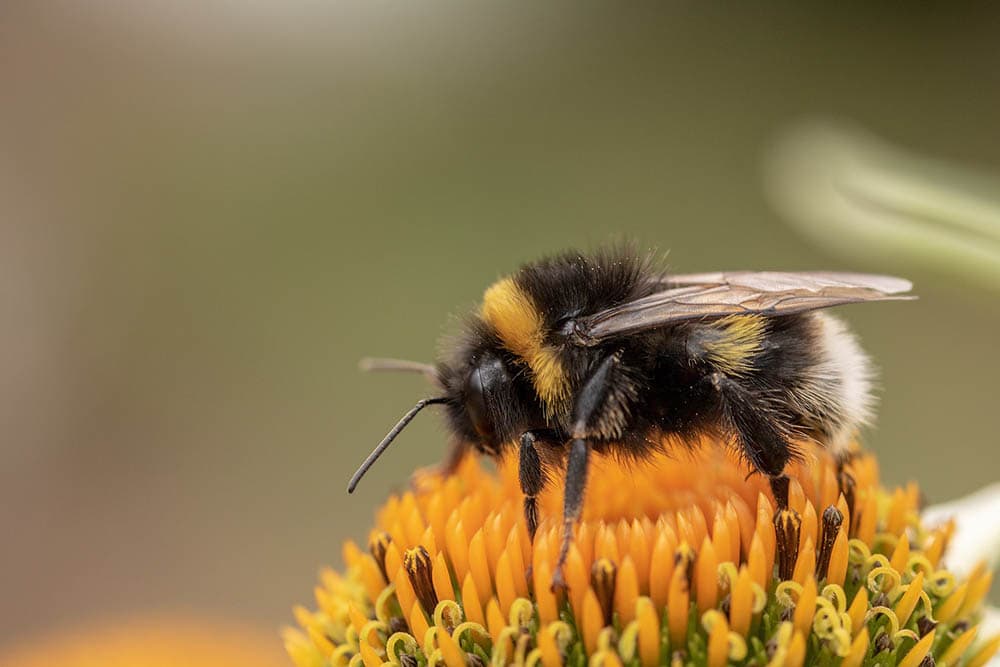
Bees are essential to our ecosystem. They pollinate¹ more than a quarter of all flowering plants and about three-quarters of all fruits and vegetables. They’re also fascinating to watch and are primarily active in summer, making them a welcome addition to our gardens. With tens of thousands of species of bees¹ around the world and around 4,000 species of bees native to North America—not to mention the abundance of similar insects like wasps and hoverflies—it can be challenging to differentiate one type of bee from another.
The 19 Types of Bees in Your Backyard
Below are 19 types of bees commonly found in our backyards.
1. Ashy Mining Bee
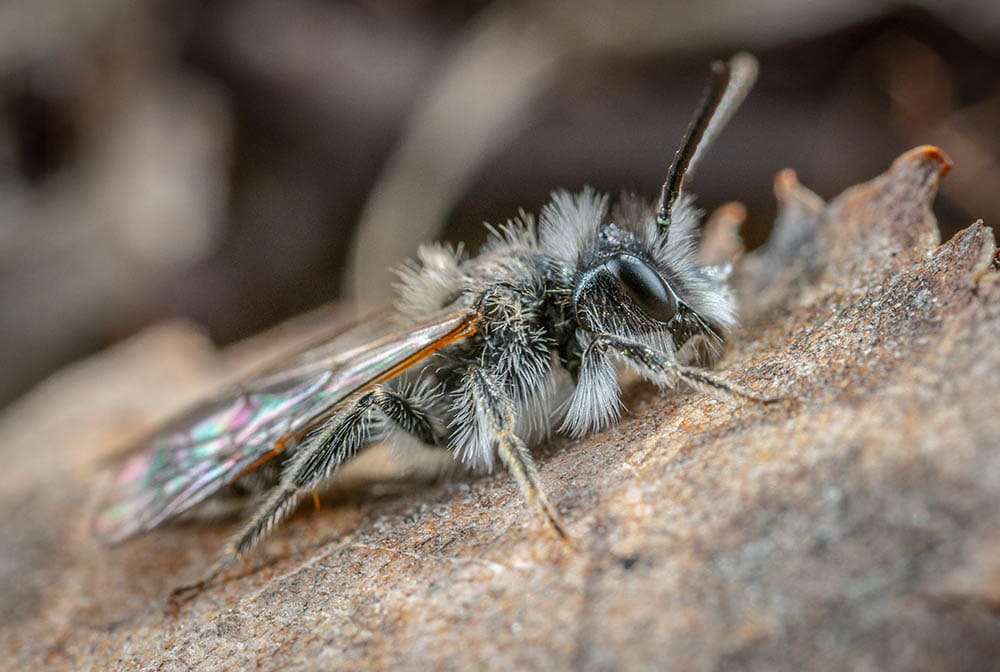
| Latin name: | Andrena cineraria |
The ashy mining bee is a type of mining bee, which means that it nests in the ground and is considered harmless. This small bee is considered somewhat friendly and can be found in gardens, parks, and other green areas. They are most often seen during spring and are recognizable by their black and gray coloring.
2. Box-Headed Blood Bee

| Latin name: | Sphecodes monilicornis |
The box-headed blood bee is most often referred to as just the blood bee and gets its name from the blood-red color of its abdomen. The rest of the name is derived from the square shape of the top of its head, especially when compared to other species of blood bee. The box-headed blood bee is a cleptoparasitic species. It steals food from other bees to feed its young. It also destroys the eggs of other bees before using the nest in which to lay its own eggs.
3. Bumblebee
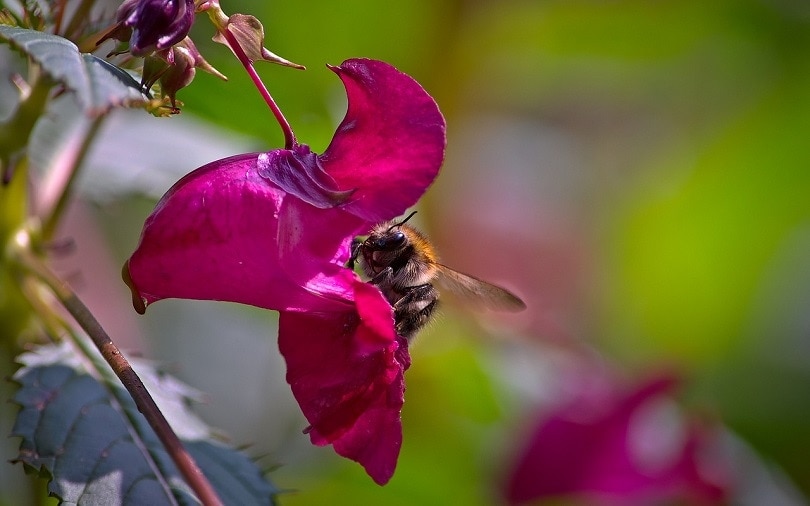
| Latin name: | Bombus |
The bumblebee is the only social species of bee that is native to North America. Females can be commonly seen throughout the year, while males are active in late summer and fall. Bumblebees are large and fuzzy, often seen in gardens and parks, and are the species that most people recognize when talking about bees.
4. Carpenter Bee
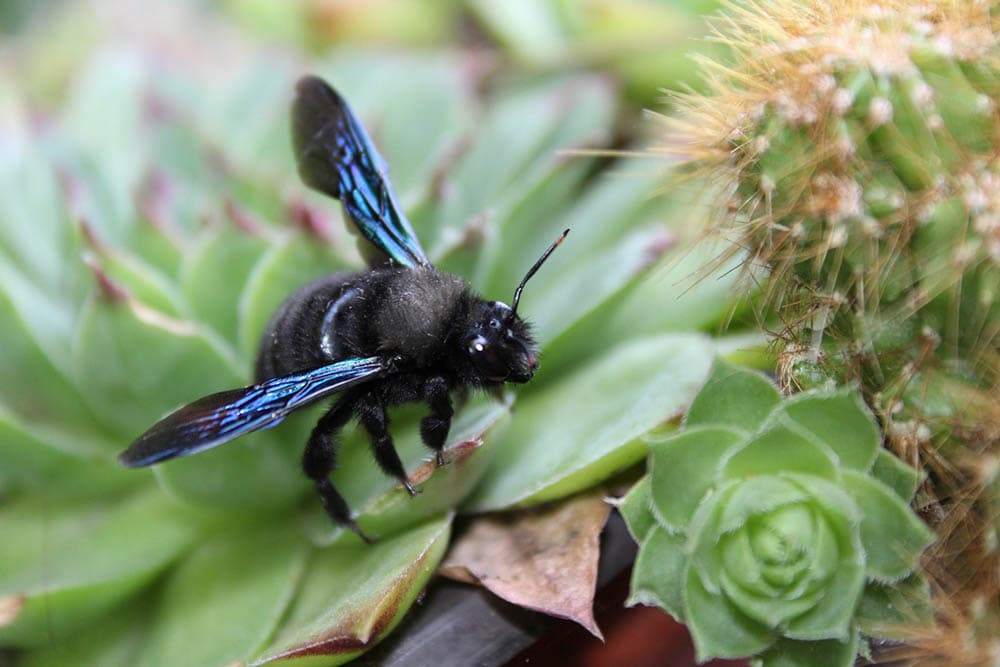
| Latin name: | Xylocopa |
Carpenter bees are large and are usually seen alone. Female carpenter bees are all black while males might have a patch of hair on the abdomen. They may also have a white or yellow face. The carpenter bee is called this because it digs through wood in order to make its nest. This habit means that while they are pollinators, carpenter bees can sometimes be considered a pest because of the damage they do to wooden structures and items.
5. Digger Bee

| Latin name: | Anthophorini |
The digger bee is a medium-sized bee that is most commonly found in Arizona where it digs its nest in desert soil. Although the bees are solitary, they may nest together in a single burrow. They have metallic black bodies and may have yellow bands. There are various types of digger bees, typically given a common name according to the type of surface they dig.
6. Furrow Bee

| Latin name: | Lasioglossum calceatum |
The furrow bee is one of a number of species in the sweat bee genus, and they are called sweat bees because they are attracted to human sweat. Their penchant for human sweat means that furrow bees will often walk calmly on your arm or the back of your hand. This small bee is ground-dwelling, and they build their nests in soil. They come in a wide variety of colors that can even include purple, but they do have bands of pale hair on their backs.
7. Green Metallic Sweat Bee

| Latin name: | Augochlora pura |
The green metallic sweat bee is one of two metallic sweat bees, with the other being black and brown. The green metallic sweat bee is a metallic green color and, like the furrow bee, it is attracted to the salty sweat of humans.
8. Hairy-Footed Flower Bee
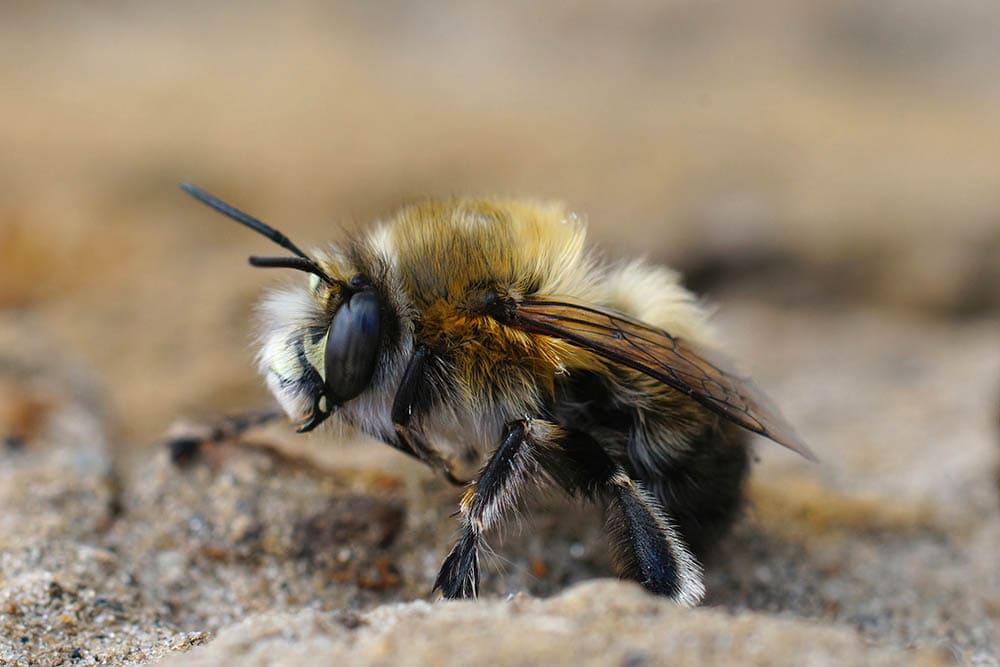
| Latin name: | Anthrophora plumipes |
The hairy-footed flower bee is usually a solitary bee but may be found nesting with others. They will nest in the mortar of walls but may also nest in the ground, and they get their name from the fact that they have even hairier feet than most other species of bee. They look similar in appearance to bumblebees.
9. Honeybee

| Latin name: | Apis |
The honeybee is not native to North America and was introduced by Europeans for its honey-making skills. They are usually only found in and around commercial beehives, but some wild populations do exist, and they can be recognized by their large hairy eyes and for the fact that they are one of few species that do not have spurs, or spikes, on their hind legs.
10. Ivy Bee

| Latin name: | Colletidae |
The ivy bee is bigger than a honeybee and is sometimes called a cellophane bee because of the lining it applies inside its nest. It is a type of plasterer bee but can be distinguished from others by the time of year. Ivy bees are seen later in the year.
11. Leafcutter Bee

| Latin name: | Megachile latreille |
Leafcutter bees are black with white hairs on their abdomen and thorax. They are quick and have been found to be incredibly efficient pollinators—approximately 200 times as efficient as honeybees. They get their name from cutting leaves and using the pieces to seal up their nests. Their cuts are perfectly straight.
12. Long-Horn Bee
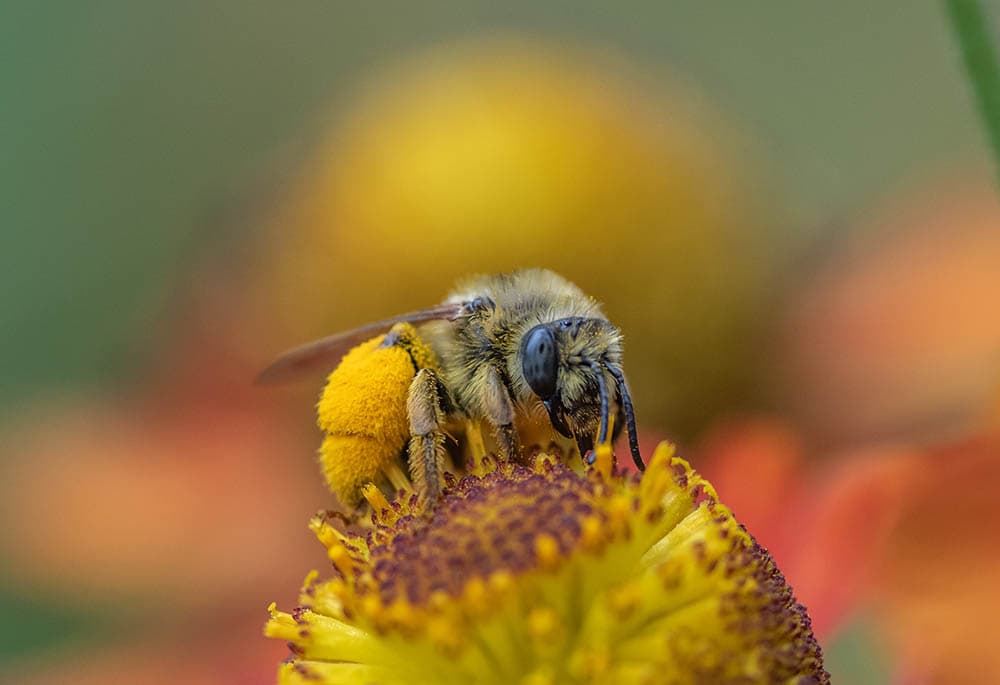
| Latin name: | Eucera longicornis |
The long-horn bee gets its name from the unusually long antenna of the male. The bees are black and hairy and have very long hairs on their hind legs. These bees usually nest in the ground, and they can be attracted to your garden with plants like sunflowers.
13. Mason Bee

| Latin name: | Osmia |
The mason bee uses mud and some types of masonry to build its nest, which are usually found in crevices in walls and stones. These small bees are fast and are known to be prolific pollinators and carry pollen on hairs on their abdomen rather than in pollen baskets on their legs. The Latin name Osmia means “odor,” which is given to the fact that the mason bee leaves a citrus scent at the entrance to its nest.
14. Pantaloon Bee
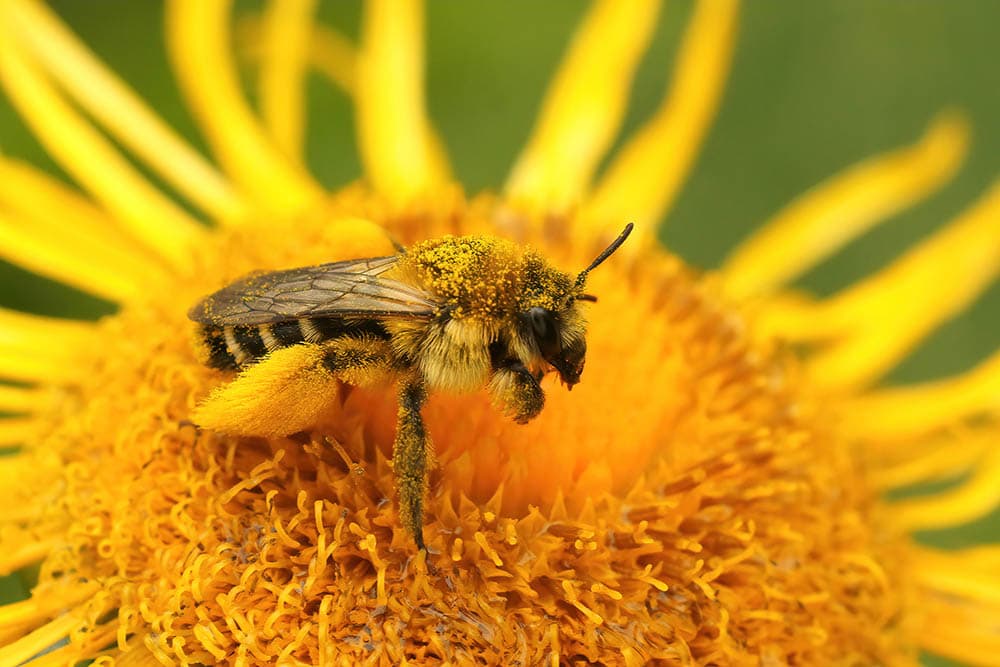
| Latin name: | Dasypoda hirtipes |
The pantaloon bee is a mining bee that is usually solitary. The females have large pollen brushes on their hind legs, which are yellow and look like the bee is wearing pantaloons. The brushes are shaped like this to help remove sand from the bee’s preferred sandy soil burrow. These are medium in size and have gold and black abdominal stripes.
15. Southeastern Blueberry Bee

| Latin name: | Habropoda laboriosa |
The southeastern blueberry bee looks like a bumblebee but with a smaller body, and it is closely linked to the blueberry. The species is one of few bee species that are able to pollinate blueberries, and its body has evolved to fit comfortably inside the blueberry flower. They nest in the ground and, unsurprisingly, are most often found near blueberry plants.
16. Squash Bee
| Latin name: | Peponapis |
The squash bee was once the primary pollinator of squashes and grounds in North America, although the introduction of honeybees by Europeans changed their habits somewhat. The squash bee is still very effective at pollinating squashes, and they do so early in the day before the honeybee visits later in the day.
17. Striped Green Sweat Bee
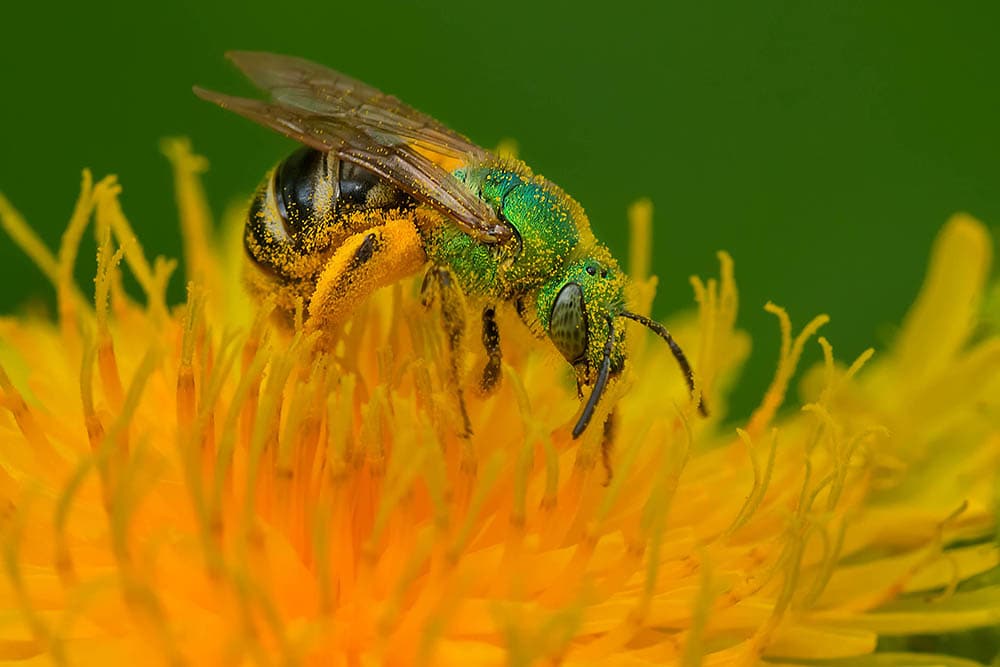
| Latin name: | Agapostemon |
The striped green sweat bee is a small native bee that has a metallic green thorax and head, with a black and yellow abdomen. They nest in the ground and their coloring makes this type of sweat bee easy to recognize. As a sweat bee, it is not unusual for this species to walk on a human’s arms and gather sweat.
18. Wool Carder Bee
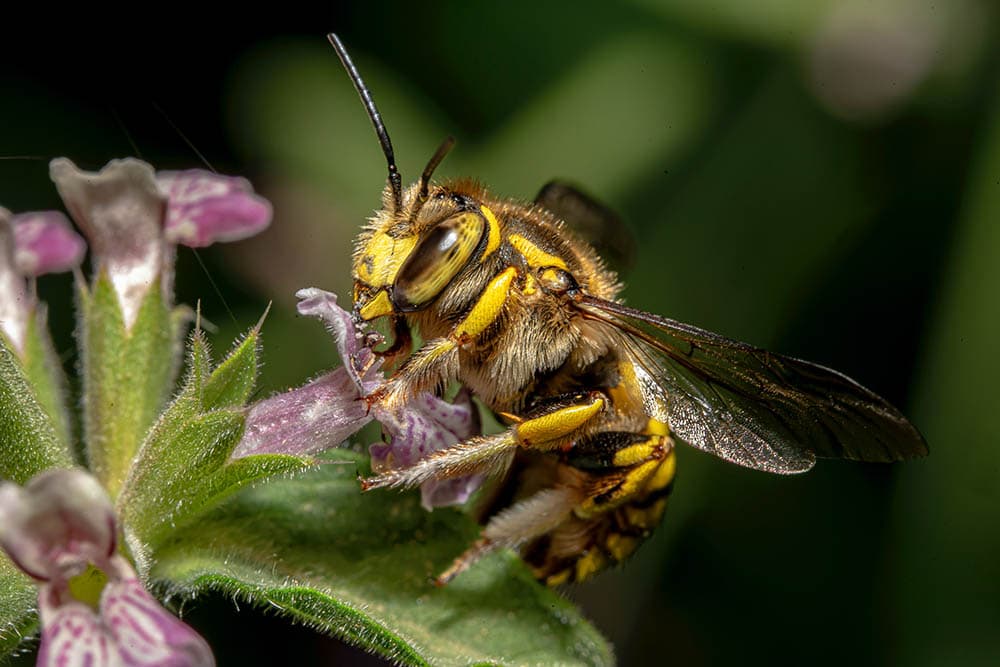
| Latin name: | Anthidium maculosum |
The wool carder bee is a type of carder bee, which means that it scrapes the fuzzy hair off the leaves of some plants. They have stings, rather than spikes, on their legs, and these scrape the wool off plants. Found in woodlands, these bees usually nest in existing holes.
19. Yellow-Faced Bee
| Latin name: | Hylaeus |
The yellow-faced bee has the shape and dimensions of a wasp but is all back apart from a yellow face. The bee is solitary and builds its nest in existing holes and cavities and they are especially found on carrot plants and milkweed.
Conclusion
Bees are an essential part of the ecosystem, but in some areas, their numbers are in serious decline. While there are tens of thousands of species of bee, several thousand of which are native to North America, the species above, and those that are very similar, are the ones you are most likely to see in the garden or while out walking.
Featured Image Credit: Myriams-Fotos, Pixabay
Contents


